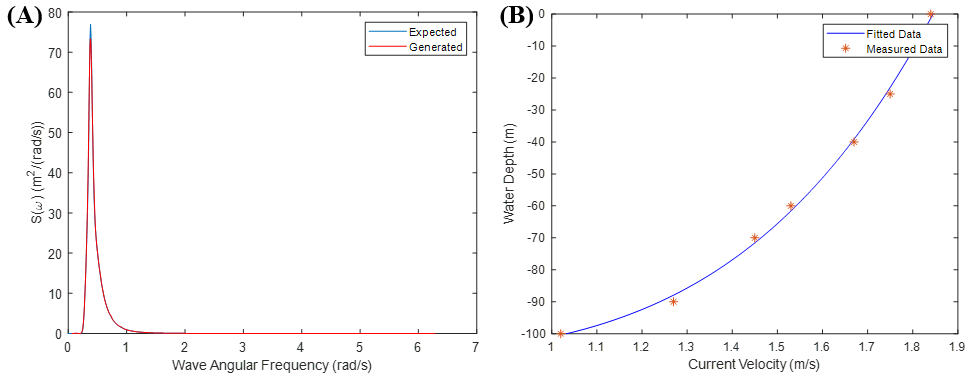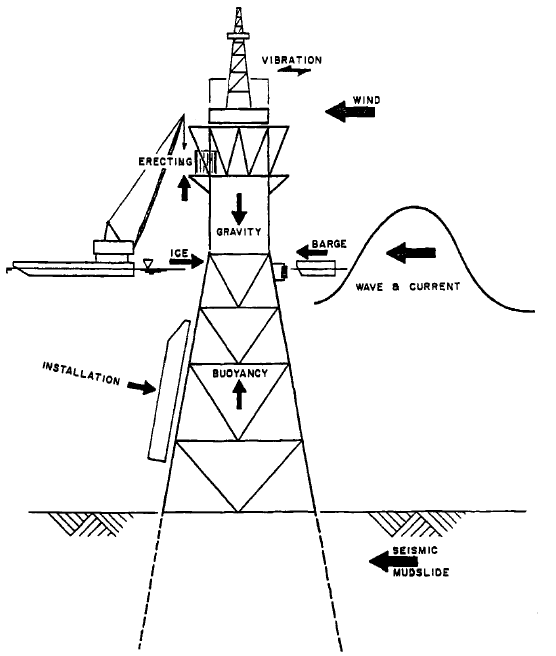Written by: Choon Kiat William Chia
Design Basis
The jacket will be designed to the American Petroleum Institute (API) Recommended Practice for Planning, Designing and Constructing Fixed Offshore Platforms – Working Stress Design (RP-2A-WSD) standard. The platform must be capable of supporting the defined hydrogen production mechanism and to store one day worth of hydrogen produced. Working Stress Design (WSD) uses the actual expected maximum loads to calculate the existing internal stresses. By taking into consideration of various appropriate safety factors, the calculated stresses are then cross-checked against allowable safe loads.
For this project, due to time constraints, only the jacket structure was analysed in detail and that a preliminary general arrangement for the topside was produced. Structural details of the topside, jacket bracing joints as well as piles had not been considered.
Design Metocean Data
Based on literature research, the design metocean conditions for Buchan Deep are as specified in Table 1. The datum used for the tidal data is the mean sea level (MSL), defined as the ordnance datum located at Newlyn, United Kingdom. It is further noted that the values quoted in Table 1 are for maximum design conditions with a return period of 100 years where applicable.
Table 1: Sourced or assumed environmental conditions (Statoil, 2014).
The maximum design wave height, Hmax can be derived from the design significant wave height, HS by using the equation below (Chakrabarti, 1987):
This will result in a maximum design wave height of 25.67 m. On the other hand, Figure 1 (A) shows the JONSWAP spectrum plotted using the relevant data in Table 1 while Figure 1 (B) shows the current velocity profile that was estimated using power law based on the measured data given in Statoil (2014).

Figure 1 (A): Design wave spectrum (JONSWAP). (B): Current velocity profile along the water depth estimated using power law.
Design Loads
According to El-Reedy (2015), loadings that a fixed jacket platform are subjected to can be broadly categorised into the following:
- Gravity Loads
- Environmental Loads
- Seismic Loads
For this design scenario, the team only considered the effects of gravity loads and environmental loads. Figure 2 below illustrates the different kinds of loadings acting on a fixed jacket platform.

Figure 2: Loads acting on a fixed jacket platform (Chakrabarti, 2005).
Gravity loads include dead loads, live loads and other relevant loads. Dead load usually refers to the permanent loads that are unlikely to vary much during the lifecycle of the structure. This may include the deadweight of the structure, immovable equipment or fixtures etc. On the other hand, live loads refer to various variable loads including that of storage etc. For this project, to simplify the analysis, the team had assumed the total topside dead and operating weights to be 16500 tonnes.
On the other hand, environmental loads include loads imposed on the platform due to natural phenomena such as wind, wave, current etc. Unless specific conditions are known, environmental loads should be anticipated from any direction (API, 2002). However, due to time constraints, only the combined wave and current as well as wind loadings at 0° heading were considered for this report.
The designed jacket structure would be modelled and analysed using DNV GL GeniE with the input of all relevant design loads and environmental conditions. The structural details can be found in the page for Design of the IPP while more detailed discussion about the structural analysis can be found in the page for Detailed Analysis Results for the IPP.
References
API. (2002). Recommended Practice for Planning, Designing and Constructing Fixed Offshore Platforms – Working Stress Design.
Chakrabarti, S. (1987). Hydrodynamics of Offshore Structures. Southampton, United Kingdom: WIT Press.
Chakrabarti, S. (2005). Handbook of Offshore Engineering (2-volume set): Elsevier.
El-Reedy, M. A. (2015). 3 – Offshore Structures’ Loads and Strength. In M. A. El-Reedy (Ed.), Marine Structural Design Calculations (pp. 33-84). Oxford: Butterworth-Heinemann.
Statoil. (2014). Hywind Buchan Deep Metocean Design Basis. Retrieved from http://marine.gov.scot/sites/default/files/metocean_design_basis_hywind_buchan_deep_mdb_rev2_0.pdf


